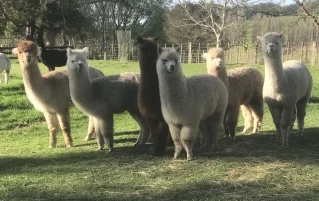
Farm Tours
We offer farm tours for smaller groups and families to meet, feed, interact with and walk with our alpacas.
For full details and to book your experience of these wonderful animals, please go to our reservation form.
There are many plants growing in paddocks and gardens that are poisonous to alpacas and these must be removed, including from hedgerows if within alpaca reach. Obviously, prevention is better than cure - there are no antidotes for many of the toxic chemicals contained in these plants. Simple rules can be used to ensure your animals are safe from toxic plants:
The list of toxic plants is extensive but many of the dangerous species you will come across are shown below. Remember, this list is not exhaustive and many of the plants grown in gardens can be toxic if enough is eaten. Although this list is New Zealand-oriented, many of the plants shown or closely related species are found in similar climates around the world.
Click or tap on the image of the plant for a larger version of the picture. Click or tap on the title of the plant to be taken to an article with further information about the plant.
Important: The contents of this page and links from it are not veterinary advice. If you even suspect that your alpaca has eaten a toxic plant, you must seek veterinary help immediately.
The following plants shown with a red background are extremely toxic.
The following plants shown with a blue background are considered dangerous to the health of your alpacas.
The following plants shown with a green background are best removed as they are known to be toxic to some stock.